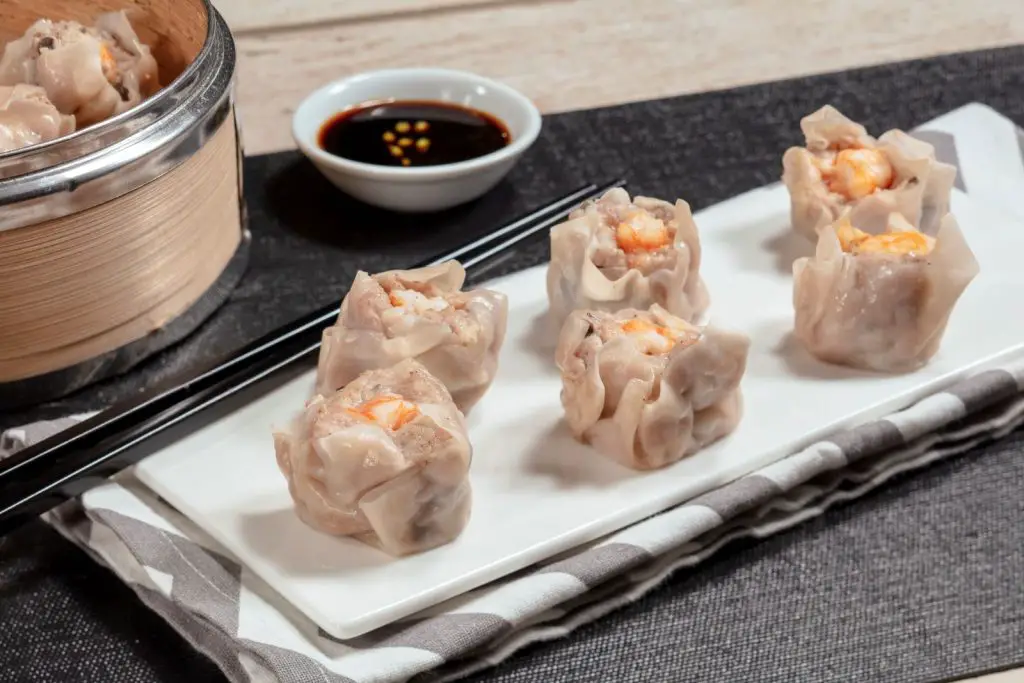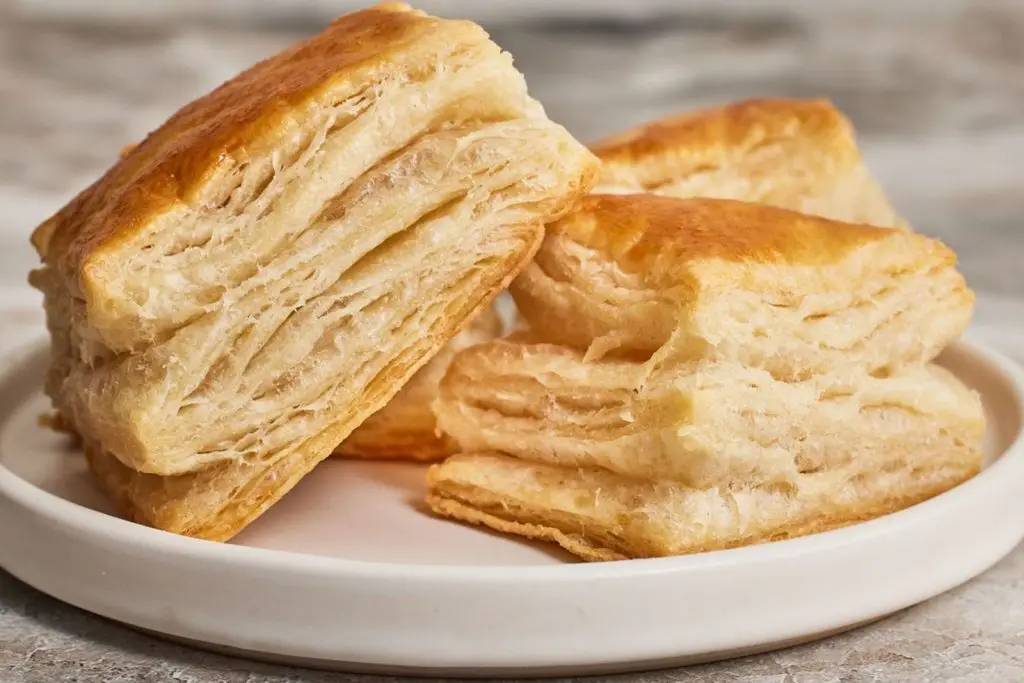
Pierogies are a traditional Polish dish made of dough filled with various ingredients such as mashed potatoes, cheese, sauerkraut, or meat. They are also popular in other Eastern European countries, including Ukraine, and Russia. They are often boiled or pan-fried and served with sour cream, bacon, or caramelized onions. Pierogies can be made in large batches and frozen for later use, making them a convenient and delicious meal option. Freezing pierogies is a simple process that involves preparing and cooking the pierogies, freezing them on a baking sheet, and then transferring them to a freezer-safe container or bag. When ready to eat, frozen pierogies can be boiled, pan-fried, or baked for a quick and easy meal.
Here are some simple steps to freeze pierogies:
Step 1: Prepare the pierogies
To prepare pierogies by boiling them, you’ll need a large pot of salted water and a slotted spoon or strainer to remove them from the water. Here are the steps:
- Fill a large pot with enough water to cover the pierogies and bring it to a boil over high heat.
- Once the water is boiling, add a generous amount of salt (about 1-2 tablespoons) to the water. This will help to flavor the pierogies and prevent them from sticking together.
- Carefully add the pierogies to the boiling water, making sure not to overcrowd the pot. Depending on the size of your pot, you may need to boil the pierogies in batches.
- Let the pierogies cook in the boiling water for 2-3 minutes, or until they float to the surface. This indicates that they are fully cooked.
That’s it! Boiling pierogies is a simple and easy way to prepare them, and they make a delicious and satisfying meal.
Step 2: Remove the pierogies from the water
After boiling pierogies in salted water, it’s important to remove them from the pot using a slotted spoon or strainer. This is because the pierogies will be hot and delicate, and using a regular spoon or tongs may cause them to break apart or become damaged.
Once you’ve removed the pierogies from the water, it’s a good idea to place them on a clean towel or paper towel to dry. This will help to remove any excess water that may be clinging to the pierogies, which can make them soggy or less flavorful. Additionally, allowing the pierogies to dry for a few minutes will help them to develop a slightly firmer texture on the outside, which can be especially desirable if you plan to pan-fry or sauté them.
To dry pierogies on a towel or paper towel, simply lay them out in a single layer and pat them gently with another towel or paper towel. Be careful not to press too hard, as this may cause the pierogies to break apart. Alternatively, you can simply let the pierogies air-dry for a few minutes on a plate or baking sheet before cooking or serving them.
Overall, removing pierogies from the water with a slotted spoon and drying them on a towel or paper towel are simple steps that can help to ensure that your pierogies turn out perfectly cooked and delicious!
Step 3: Transfer them to a baking sheet lined w/ parchment paper
Transferring pierogies to a baking sheet lined with parchment paper is a helpful step if you plan to freeze or store them for later use. This is because the parchment paper helps to prevent the pierogies from sticking to the baking sheet and also makes it easier to remove them from the sheet later on.
Ensuring that the pierogies are not touching each other on the baking sheet is also important. This is because pierogies can sometimes stick together if they are touching, especially if they are not fully dry or have a filling that is sticky or moist. If the pierogies stick together, they may become damaged or difficult to separate, which can make them less appetizing.
To transfer pierogies to a baking sheet lined with parchment paper, simply arrange them in a single layer on the sheet, making sure that they are not touching each other. You can also sprinkle a little bit of flour or cornstarch on the parchment paper before placing the pierogies on it, which can help to further prevent sticking.
Once the pierogies are arranged on the baking sheet, you can place the sheet in the freezer (if you are planning to freeze the pierogies) or store it in the refrigerator (if you plan to use the pierogies within a few days). Once the pierogies are frozen or stored, you can remove them from the baking sheet and transfer them to an airtight container or plastic bag for further storage.
Step 4: Place the baking sheet in the freezer
Freezing pierogies on a baking sheet before storing them in an airtight container or plastic bag is an important step in the process of preparing pierogies for later use. This is because freezing the pierogies on a baking sheet allows them to become firm and individualized before they are packed away in storage. If pierogies are not frozen individually before being stored, they may freeze together in clumps, which can make them difficult to separate and cook evenly.
Freezing the pierogies on the baking sheet for about 1-2 hours, or until they are firm to the touch, is important because it ensures that the pierogies are frozen enough to be transferred to a storage container without sticking together, but not so frozen that they are completely solid. Pierogies that are completely solid when removed from the freezer can be difficult to cook evenly and may not be as appetizing as those that have been partially thawed before cooking.
Once the pierogies are frozen on the baking sheet, they can be transferred to an airtight container or plastic bag for further storage in the freezer. Be sure to label the container or bag with the date that the pierogies were frozen, so you can keep track of how long they have been stored.
Step 5: Transfer them to a freezer-safe container
Once pierogies have been frozen, it is important to transfer them to a freezer-safe container or freezer bag for optimal storage. This will help to protect the pierogies from freezer burn, which can affect their texture and taste.
To transfer the pierogies to a freezer-safe container or bag, remove them from the baking sheet or other container in which they were frozen. Then, place them in a container or bag that is specifically designed for freezer use. Be sure to choose a container or bag that is the appropriate size for the pierogies and provides a tight seal to prevent air from entering.
Before sealing the container or bag, it is important to label it with the date and contents. This will help you keep track of how long the pierogies have been stored and make it easier to identify them in the freezer.
Once the container or bag is labeled and sealed, place it in the freezer. Pierogies can be stored in the freezer for up to 2-3 months, but it is best to consume them within this timeframe for optimal quality and taste. When you are ready to eat the pierogies, remove them from the freezer and cook them according to your preferred method.
Step 6: Place the pierogies back in the freezer
The last step of putting the pierogies in the freezer is an important one for preserving their freshness and ensuring that they are safe to eat at a later time.
Pierogies can be stored in the freezer for up to 2-3 months, but it is recommended to consume them within this timeframe for optimal quality and taste. To cook frozen pierogies, you can either boil them in water for a few minutes until they float to the surface, or fry them in a pan with butter or oil.
To ensure that pierogies are safe to eat, always follow food safety guidelines and discard any pierogies that appear spoiled or have an unusual odor or color.
Other related questions
Do you thaw frozen pierogies before cooking?
Yes, it is recommended to thaw frozen pierogies before cooking. Thawing the pierogies ensures that they cook evenly and thoroughly, and helps prevent them from sticking together or falling apart during cooking.
You can thaw frozen pierogies in the refrigerator overnight, or use the cold water or microwave method for quicker thawing. Once the pierogies are thawed, you can cook them using your preferred method, such as boiling, frying, or baking.
It is important to follow food safety guidelines and cook pierogies to the appropriate temperature to ensure that they are safe to eat. If you try to cook frozen pierogies without thawing them first, they may not cook evenly, and you may end up with a combination of overcooked and undercooked pierogies.
How to thaw frozen pierogies?
There are a few methods you can use to thaw frozen pierogies:
Refrigerator method:
This is the recommended method for thawing pierogies. Simply transfer the pierogies from the freezer to the refrigerator and let them thaw overnight. This will ensure that they thaw evenly and safely.
Cold water method:
If you need to thaw pierogies quickly, you can use the cold water method. Place the frozen pierogies in a resealable plastic bag and submerge them in cold water. Change the water every 30 minutes until the pierogies are thawed. This method can take anywhere from 30 minutes to an hour, depending on the quantity and size of the pierogies.
Microwave method:
You can also thaw pierogies in the microwave, but be careful not to overcook them. Place the frozen pierogies on a microwave-safe plate and microwave them on the defrost setting for 1-2 minutes. Check the pierogies every 30 seconds and flip them over to ensure even thawing.
After the pierogies are thawed, they can be cooked using your preferred method, such as boiling, frying, or baking. It is important to follow food safety guidelines and cook pierogies to the appropriate temperature to ensure that they are safe to eat.
How do you reheat pierogies?
There are several ways to reheat pierogies, depending on your preference and the amount of time you have:
Boiling:
This is a traditional method for reheating pierogies. Bring a pot of salted water to a boil and add the pierogies. Cook for 3-4 minutes or until the pierogies float to the surface. Drain the pierogies and serve with your favorite toppings.
Frying:
To add some crispiness to your pierogies, fry them in a pan with a bit of butter or oil. Heat a skillet over medium-high heat and add the pierogies. Cook for 2-3 minutes on each side or until golden brown and crispy.
Baking:
Preheat your oven to 350°F (175°C) and place the pierogies on a baking sheet. Bake for 10-12 minutes or until heated through.
Microwaving:
If you’re short on time, you can microwave pierogies. Place the pierogies on a microwave-safe plate and cover with a damp paper towel. Microwave on high for 30 seconds to 1 minute, or until heated through.
No matter which method you choose, be sure to keep an eye on the pierogies as they reheat to avoid overcooking or burning them. And don’t forget to serve them with your favorite toppings, such as sautéed onions, sour cream, or bacon bits.
Do you have to freeze pierogies before cooking?
No, you do not have to freeze pierogies before cooking. Fresh pierogies can be cooked immediately after they are made or purchased, without freezing them first.
However, if you have leftover pierogies that you do not plan to eat right away, it is a good idea to freeze them to extend their shelf life. Freezing pierogies is a great way to preserve them for later use, and it can be a convenient way to have pierogies on hand for quick meals or snacks.
If you are making pierogies from scratch, you can freeze them after they are boiled or fried, or you can freeze them uncooked. If you are using store-bought pierogies, they are usually sold frozen and can be cooked straight from the freezer after thawing.
Overall, while freezing pierogies before cooking are not necessary, it can be a helpful way to preserve them and have them on hand for future meals.
Can you refreeze pierogies?
It is generally not recommended to refreeze pierogies once they have been thawed. When pierogies are frozen and then thawed, the ice crystals in the pierogies melt and can cause moisture loss and changes in texture. If the thawed pierogies are then refrozen, the ice crystals can form again and further damage the texture and quality of the pierogies.
Refreezing can also increase the risk of bacterial growth and foodborne illness. When pierogies are thawed, bacteria can begin to grow at temperatures above 40°F (4°C). If the thawed pierogies are left at room temperature for more than two hours, they should be discarded for safety reasons.
To avoid the need to refreeze pierogies, it is best to freeze them in small portions so that you can thaw only what you need. If you have leftovers that you do not plan to eat right away, it is best to store them in the refrigerator and consume them within a few days.








